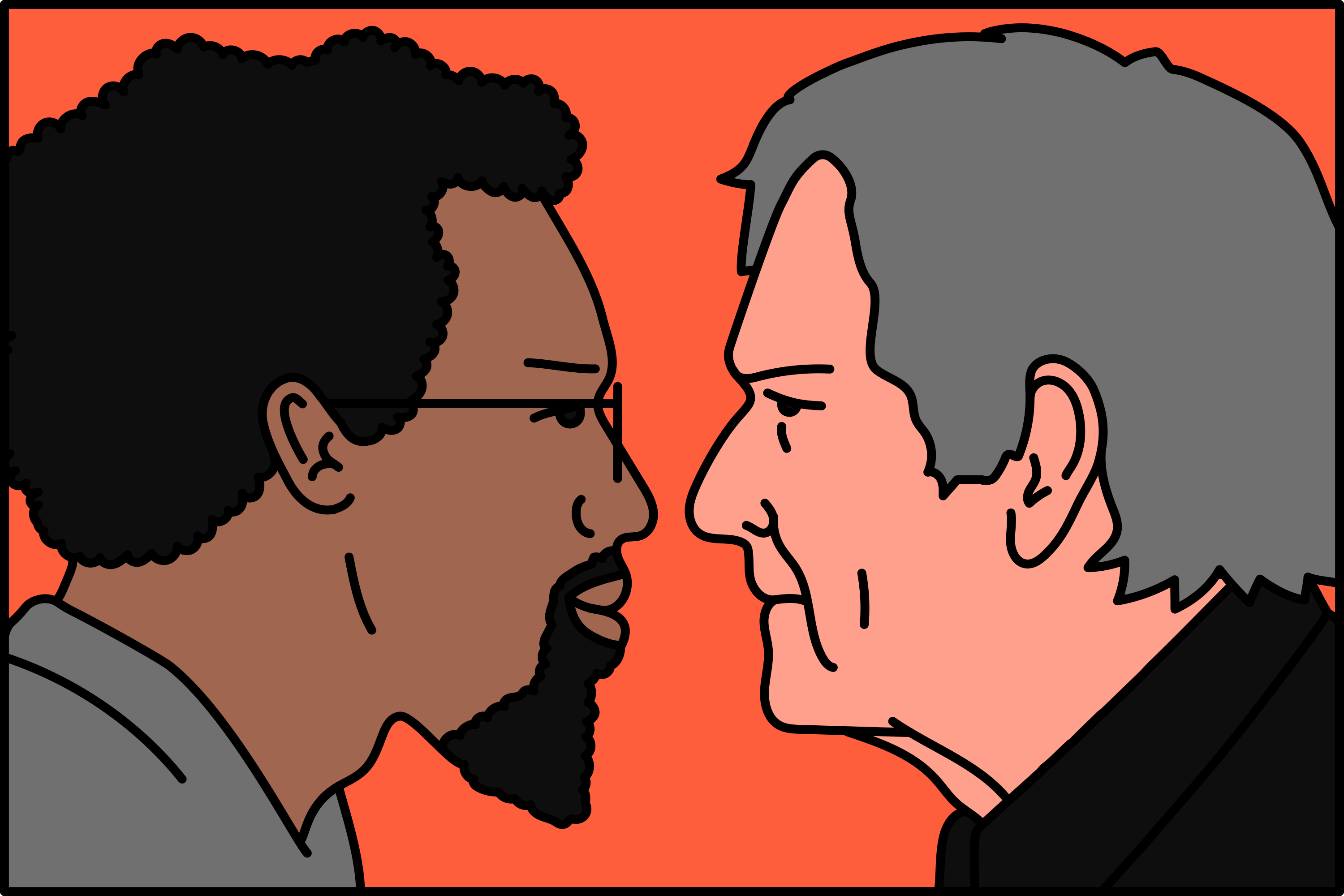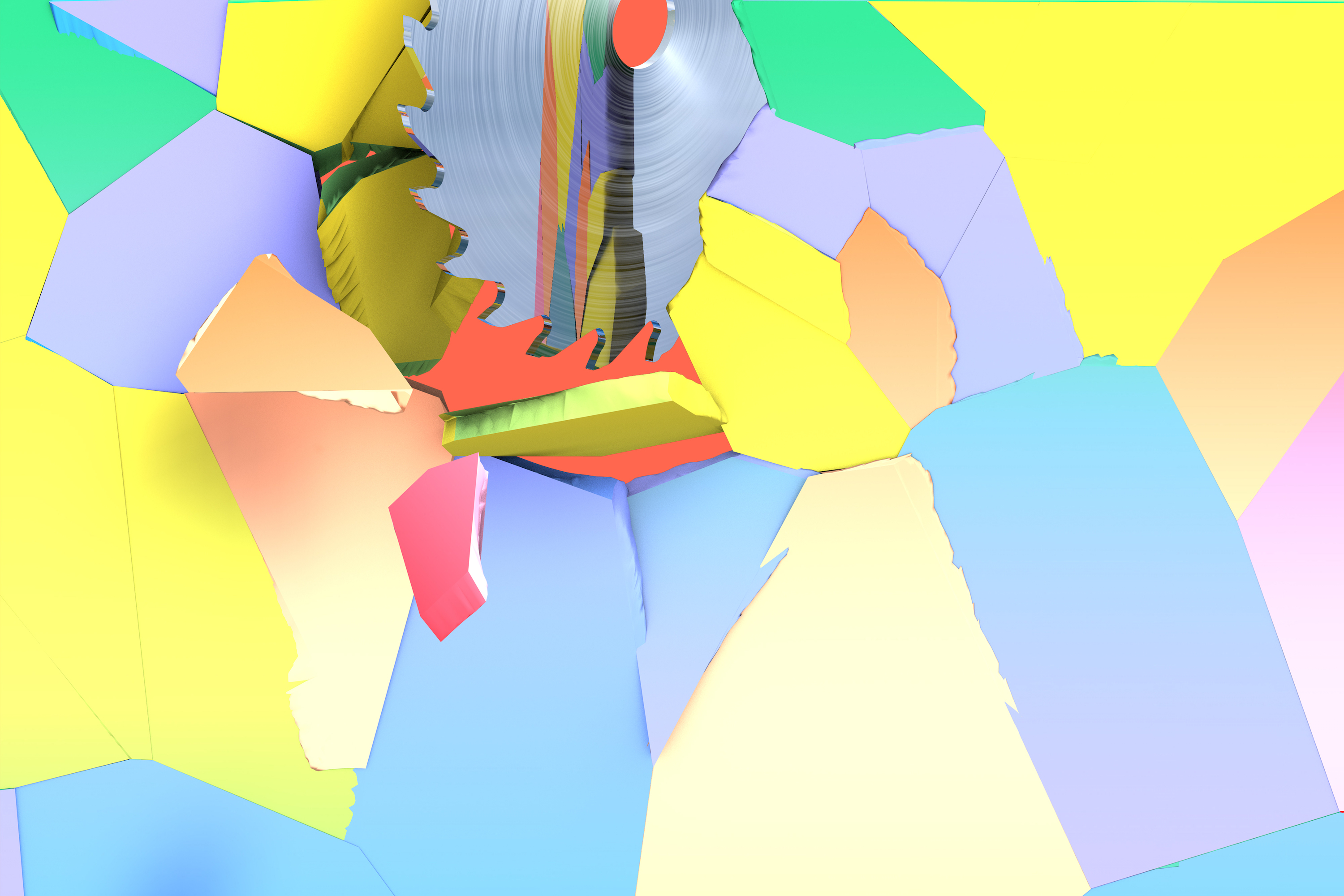
A Visit to John Cage’s 639-Year Organ Composition
Examining the expanse of time at one of the world’s slowest performances
It takes a little more than two hours to travel by train from Berlin to Halberstadt, a town of about 40,000 people in the German state of Saxony-Anhalt. From the station to St. Burchardi Church is another 20 minutes of walking, past cobblestone plazas and yellowed apartments with rooftop solar panels, to an unmarked courtyard. Moving closer to the church, there’s a high-pitched whine seeping through the thick stone, and inside is an ongoing realization of an organ composition by John Cage called ORGAN²/ASLSP. But it doesn’t really matter how long of a trip it takes to get there, whether from Berlin or the Bahamas or the South Pole. This particular musical happening will almost certainly still be going by the time you arrive, and endure long after you’ve left, returned home, lived a full life, grown old and died: The performance is scheduled to last for 639 years.
Cage, of course, is one of the dominant figures of 20th century American avant-garde music, whose art spanned from the confounding to the sublime, often at the same time. He was a master miniaturist as much as an expressive expansionist, making grand statements in the process of subverting the very idea of them. But if people know a single John Cage piece, it’s usually 4'33" – which is supposedly silent, but in fact bursting with the activity of whatever environment in which it occurs.
Cage once said that implicit in 4'33" was the idea that the movements could be of any length – ostensibly, the length of a lifetime and all the sounds to be heard within it. ORGAN²/ASLSP in Halberstadt takes this compositional consideration and philosophical approach to the logical extreme. The only limitation is humanity’s impending, inescapable mortality – and so I hopped on the train to reckon with my own.
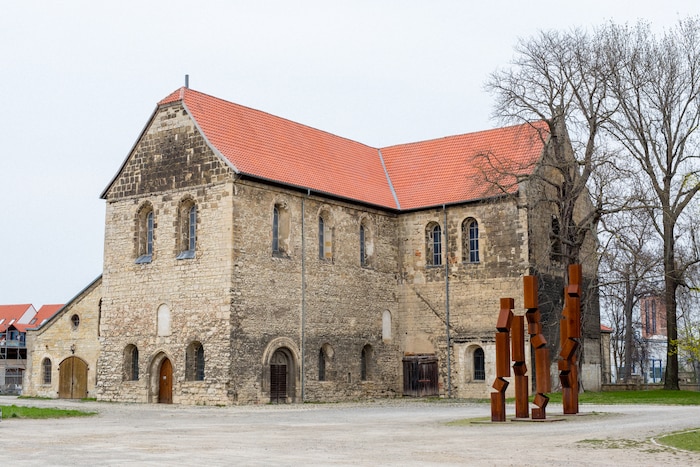
To the frustration of the city’s cultural cognoscenti, Halberstadt is known more to the German public as the home of Halberstädter Würstchen, a smoky sausage given a “Protected Geographical Indication” by the European Union. The first advertisements at the train station celebrate these Würstchen, and the sleepy town occasionally smells a bit like burning charcoal, as if they’re constantly on the grill somewhere.
The first stop is a meeting with Prof. Dr. Rainer O. Neugebauer, a self-described ethicist, anarchist, social scientist and historian, in that order, who is also the chairman of the board of trustees of the John Cage Organ Foundation. Walking through his massive personal library, there’s one corner dedicated to John Cage and a framed photo of late-era Bob Dylan above the record player – his wife, Martje, comments that it’s hard to tell which of the two artists is the true god of the household. A large rainbow flag flutters in their backyard, and a pin of the same sits on the left lapel of his otherwise all-black outfit. He pours espresso beans into an ancient, hand-cranked grinder, and brews a batch while gesticulating through a brief history of ORGAN²/ASLSP.
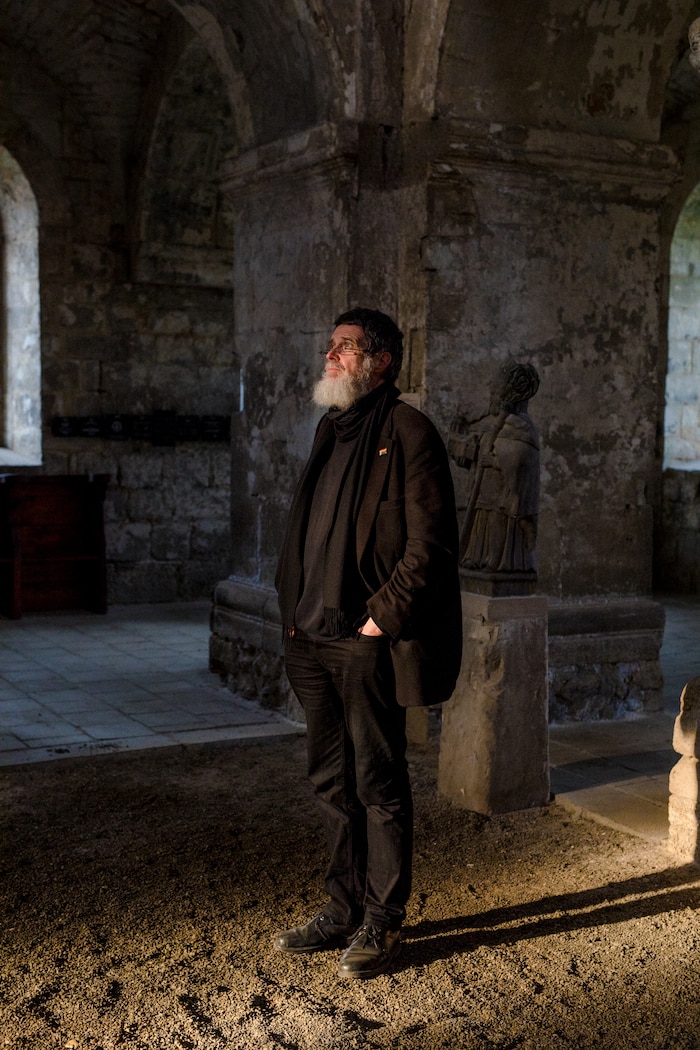
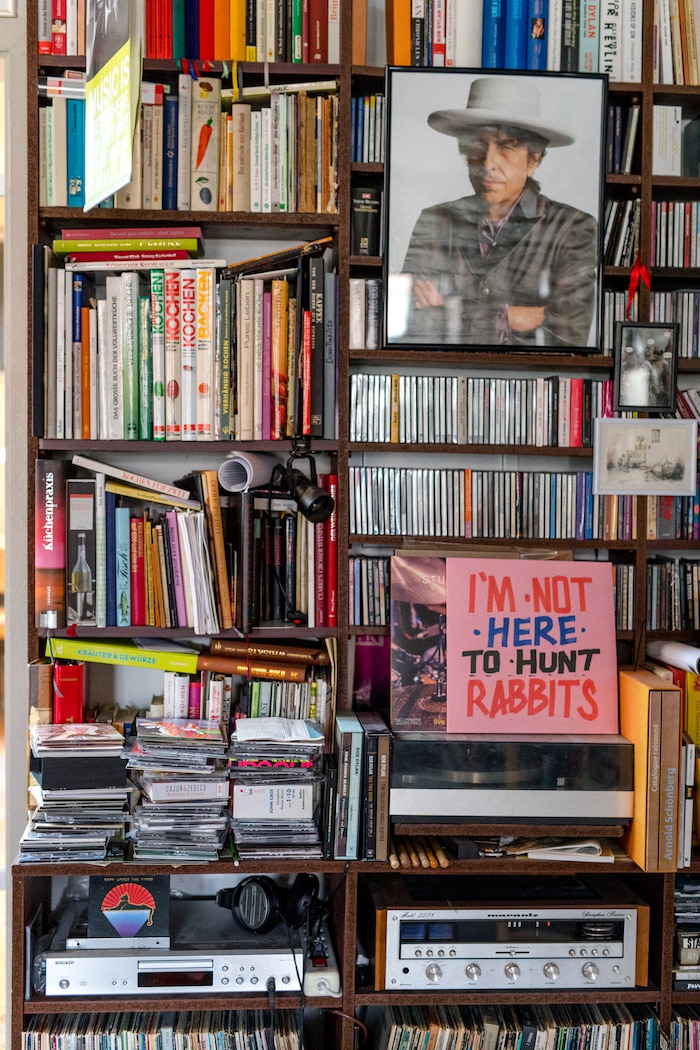

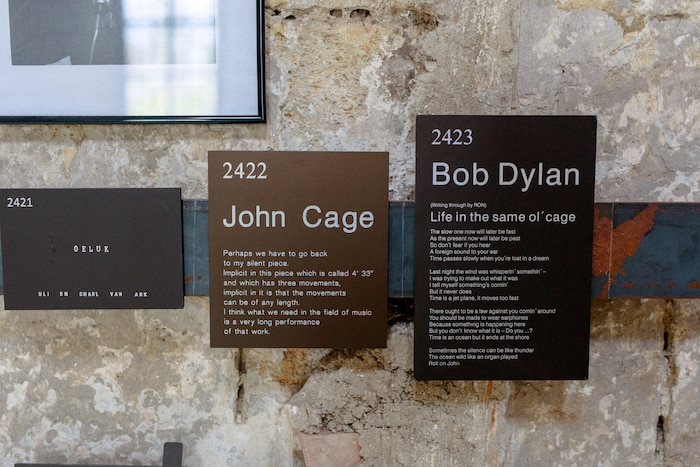
First performed in 1985, the title ASLSP refers to “As SLow aS Possible,” but also to James Joyce and Finnegan’s Wake, specifically the declaration of “Soft Morning, city! Lsp!” which starts the final paragraph. Neugebauer takes this inspirational overlap as instructive: “The piece should be slow, yes, but also soft, like the morning city.” Later on, Cage adapted it at the request of the German organist Gerd Zacher, and the first performance of the updated version ORGAN²/ASLSP took place in 1987, lasting just over 29 minutes.
Cage died on August 12th, 1992, before he could hear ORGAN²/ASLSP unfold on its current geological timescale. But the composition took on dimensions he likely would have encouraged at an organ symposium in Trossingen, Germany, in 1998. There, organists and theologians discussed what exactly it means for something to be performed “as slow as possible.” There are obvious physical limitations: an organ can theoretically be played for as long as the pipes receive adequate pressure, but a human can only sit and perform for so long. The agreement this consortium of Cageans reached was that “as slow as possible” refers to the full potential lifetime of the organ – if not of the world itself – and that, according to Neugebauer, “the piece is over only when the organ breaks down.” He gives a rueful laugh when remembering that some of the organists had suggested 1,000 years as the potential performance period – it was clear that Germany’s past experiences with things meant to last 1,000 years made that a very bad idea.
The current notes have been sounding since October 5th, 2013, and the next note is only coming on September 5th, 2020 – the longest period of time it will go without a change.
The history of Halberstadt helped determine the final proposed length for the piece. Apparently, the first organ dividing an octave into 12 half-tones was built in St. Burchardi in 1361 – a date which Neugebauer refers to as “the birth of the whole of classical and modern music. This date, and the year 2000, the millenium change, is like a mirror.” 2000 - 1361 = 639, and so “this is our definition of ‘as slow as possible.’” Due to funding and construction issues, the piece only began on what would have been Cage’s birthday, September 5th, 2001, with 17 months of silence – it starts with a rest – and is supposed to end on September 4th, 2640, at precisely 11:59 PM.
Of course, once the 639-year duration was set, the calculations for each of the note changes took up even more time. As Neugebauer explains, pulling out the sheet music, the original score didn’t include any time brackets, so the two things truly fixed are the tones and their individual durations. He ended up helping calculate the timings – “[I’m] something like a conductor, standing there with a stopwatch” – and continues to oversee the actual note changes. “We’re Germans, so it must be correct in the end.”

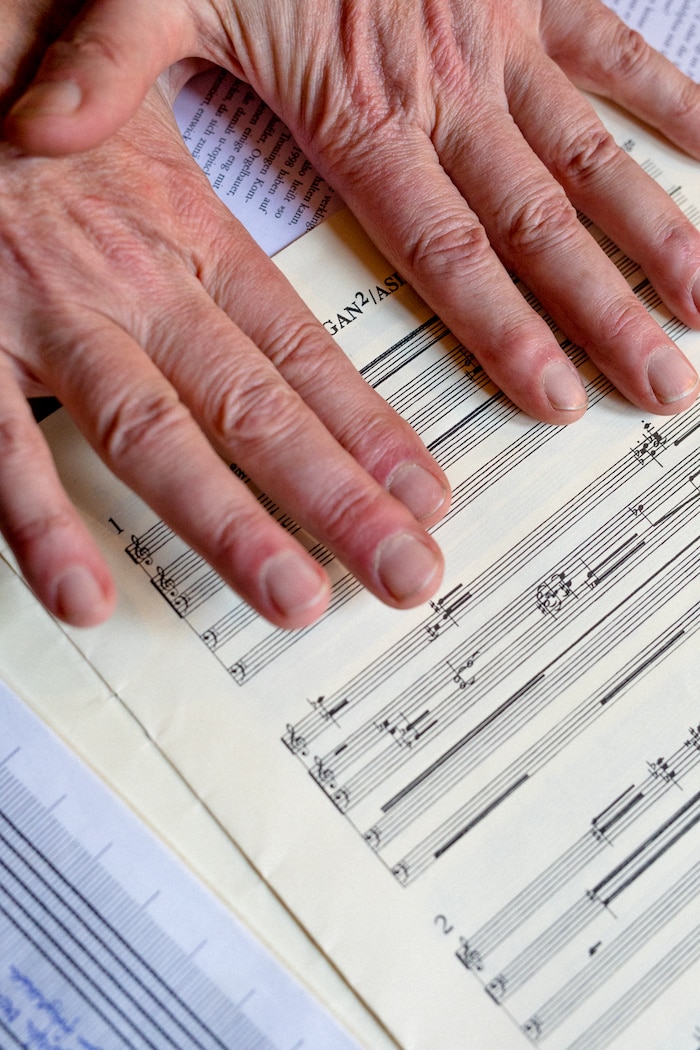
Each of the nine movements, including one repetition, will last for 71 years. The current notes have been sounding since October 5th, 2013, and the next note is only coming on September 5th, 2020 – the longest period of time it will go without a change. Neugebauer contrasts this with times when “we had two chord changes in one year – it was a very hectic year!”
If you’re wondering at this point how a town could possibly be convinced to host a performance meant to last longer than the lifetime of their children’s children’s children’s children’s children’s children’s children’s children, you wouldn’t be alone. Neugebauer pauses to pour himself a double espresso, and reflects on where ORGAN²/ASLSP sits in the minds of Halberstadt residents on the continuum between stupid and sublime. He goes into an extended riff on the double meaning of the German word “verrückt,” which could be translated as both “crazy” or “out of place.” He clearly appreciates the dual purpose of this definition and how well it suits the composition and its chosen location – yes, it’s absurd, but even moreso to be taking place in a town like Halberstadt. He estimates that “half of the people in Halberstadt don’t know about the project. The other half, 98% of them, say it’s ‘verrückt.’”

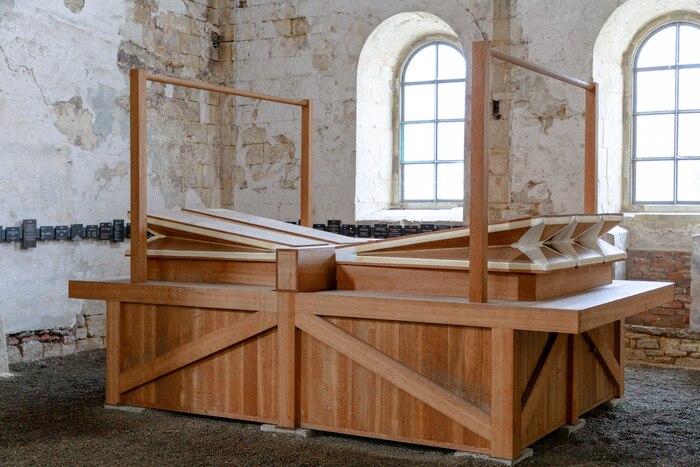
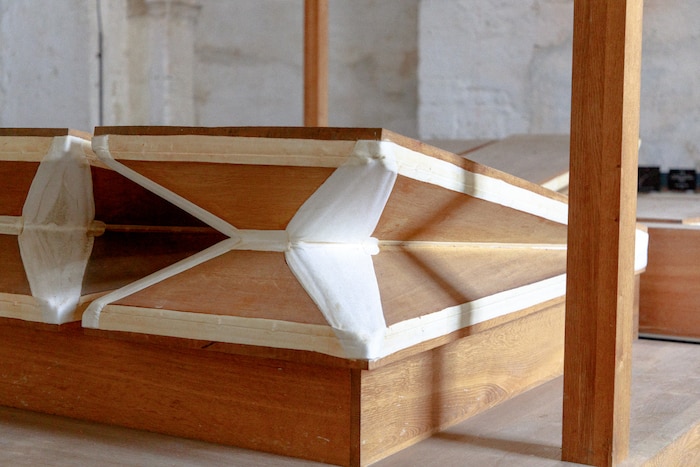
The latter group includes a contingent that complained for several years about the persistent noise coming from the church, which resulted in the foundation having to place a soundproof glass box around the organ to dampen the noise. Luckily, Neugebauer estimates that the better chunk of these people have aged out of the range of actually being able to hear the organ: “In 2013 we took the glass cover away, but didn’t tell the community. In the last six years, no one has complained.”
It also benefits Neugebauer and the foundation that the vast majority of tourists going out of their way to visit ORGAN²/ASLSP are ones the city would want to receive. “Of the people who come to visit the Cage project,” he reflects, “there are no assholes.”
Quality of visitors aside, the project’s utopian motivations prevail. Neugebauer cites Ernst Bloch and The Principle of Hope in reference to the idea of a society without fear, or violence, or domination, and how in every good artwork, “there is a little rest” from such fears. “It’s a very hopeful project,” he says. “If this works for 639 years, the church will have never had as long of a period of peace in its history.” Indeed, the available promotional materials describe ORGAN²/ASLSP as lasting for “as long as peace and creativity in the following generations exist.”
As the project has progressed, though, reality intrudes in ways beyond violence or generational exhaustion. The foundation sells plaques that commemorate years through 2640 as a primary source of income, but funding remains uncertain. They receive about 10,000 visitors a year, yet the majority of attention comes only when the note changes, a fervor they accept but are a little bemused by. According to Martje, “People want to have this special moment. But the project is not this moment. It’s the duration.”
For Rainer and Martje, ORGAN²/ASLSP also has a romantic and decidedly practical significance. The couple decided to marry on September 5th, 2000, so their anniversary always falls on the same day as the project’s own.
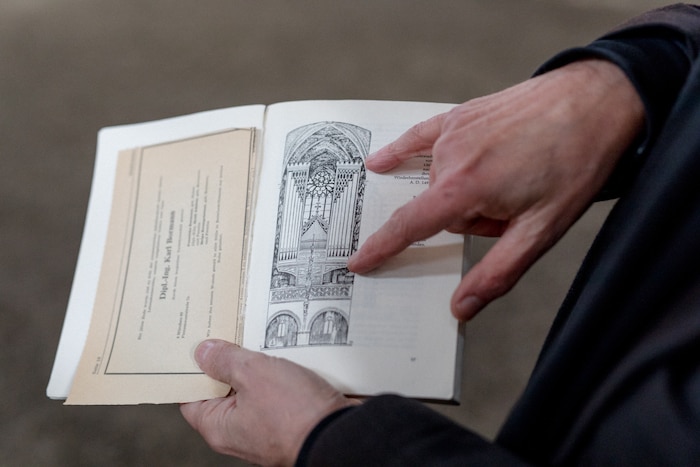
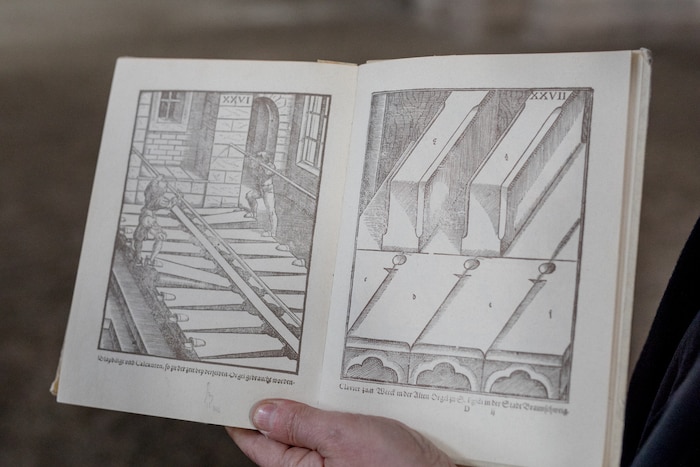
As Neugebauer opens the door to St. Burchardi, he invokes Cage himself: “The anarchist that doesn’t believe in God has a key to the church.” The bellows and pipes aren’t immediately visible, but walking down the nave the full sound takes shape. It’s a dissonant steam engine of taut, high notes, coasting over oscillating moans from the lower register billowing out below. As you move further away from the pipes, and closer to the bellows, you hear the hiss of two electric compressors battling for attention with the organ tones they’re powering.
The foundation doesn’t have enough funds to build the entire 89-pipe organ at once. Instead, it’s a skeleton of five pipes, just enough installed to sound the necessary notes – at the time of writing, from lowest to highest, that’s C, D-flat, D-sharp, A-sharp and E. According to Neugebauer, “We have no regulation of the volume, and the organ is built according to the same principles as she was in 1361: There are no screws; the glue is from animals, not chemical glue. You can make the volume higher if you increase the pressure,” but that would also lead to the possibility that too much pressure makes the pipes jump an octave. As a result, they can only sit at “not too soft and not too loud.”
There are audible tonal shifts in certain positions, and ambient noise circulates constantly – the crunch of the stones underneath, chirping birds, car engines, church bells, and occasionally a roaring stone saw from a nearby factory. The last causes concern among some visitors, but the interjection is something Neugebauer thinks Cage would have found wonderful.
The overall effect is both oppressive and peaceful. The tones and their intensity, in circumstance if not volume, are a sort of cocoon. After a while, the wheeze and whine carves out a space for whatever metaphorical meaning you’re trying to assign, beyond the capacity of what the notes could ever contain on their own.
The glacial unfolding does reflect one of Cage’s well-worn Zen koans of attention creating significance: “If something is boring after two minutes, try it for four. If still boring, try it for eight, sixteen, thirty-two, and so on. Eventually one discovers that’s not boring at all but very interesting.” Neugebauer comments that Cage in general and the piece in particular has further reminded him not to make categories of “good music, bad music, good sounds, bad sounds,” but it’s certainly only as neutral as any given listener can be.
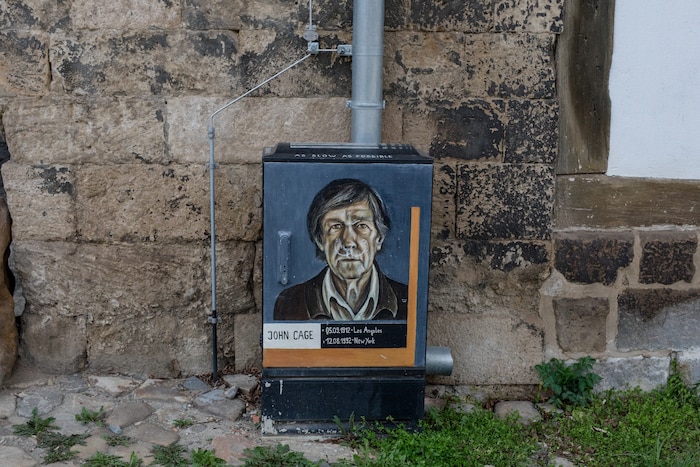
Our experience of sound is relative. There are people who define the quality of a given night out at a club by how long it lasts, or how early they went home. One person’s 4/4 loop circling blissfully ad infinitum is another’s nightmare; one person’s romantic lyric is another’s cringeworthy line. There are always spatial, structural, cultural and emotional variables, but omnipresent throughout is the ripple of time’s unavoidable presence as the ultimate boundary of our shared sonic experiences. A three-minute pop song is going to resonate differently for the vast majority of people who listen to it, love it or hate it, but it’s never going to not be three minutes.
Of course, our current moment isn’t one that necessarily encourages and rewards thinking on vast timescales in the way Halberstadt has accomplished with ORGAN²/ASLSP, amidst the impatience of the AnthropoScreene Age. In 2001, when the first notes sounded, Tom wasn’t yet everyone’s friend, and Mark didn’t have two billion of them. All this noise can make life hard to hear – but not inside St. Burchardi.
Leaving the church, there’s the sensation of having been not just surrounded by sound, but of living within it, of acting as a contributing participant whose hearing has become one element of an absurd and absurdly beautiful realization. Neugebauer is aware of the impact the experience of ORGAN²/ASLSP has on people – how could he not, considering how his own philosophies have been indelibly impacted by his ongoing activities with the project?
Preparing to board a train back to Berlin, there was a promise made to send Neugebauer certain quotes to fact-check before the week was out. But that was so soon, he remarked: “We have enough time.”
Header image © Vivek Vadoliya
